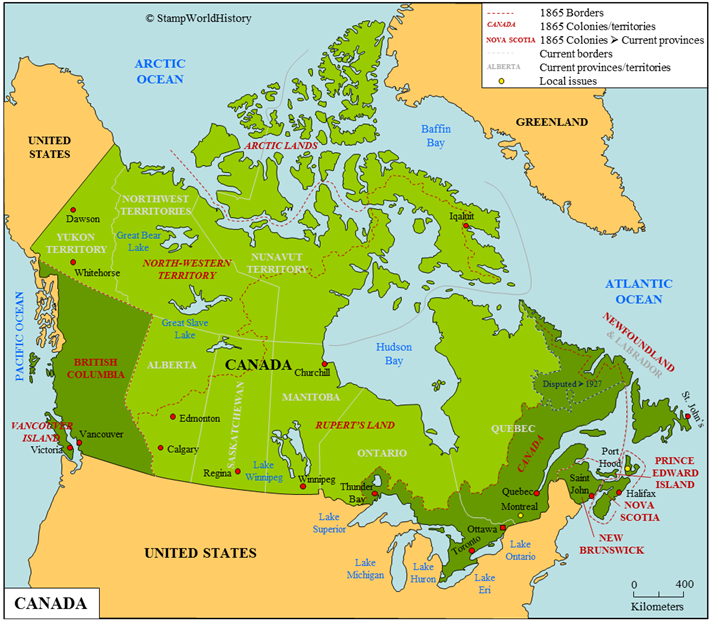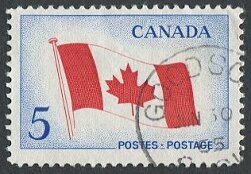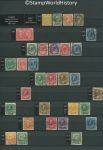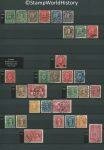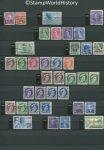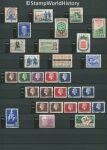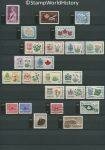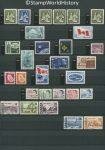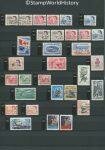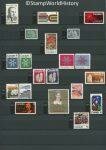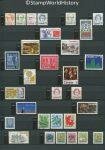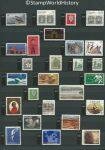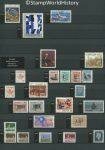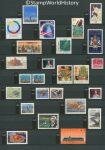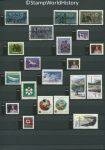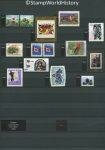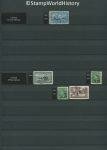
Canada
British dominion

Canada
British dominion

Canada
Current
Quick reference
General issues: British dominion/Self government 1868-1931, British dominion/Sovereign state 1931-1982, Monarchy 1982-Present
Country name on general issues: Canada
Special issues: Local issues Port Hood 1899, United Nations Montreal 1967
Currency: 1 Dollar = 100 Cent 1867-Present
Population: 5 301 000 in 1900, 35 099 000 in 2015
Political history Canada
Setting the scene
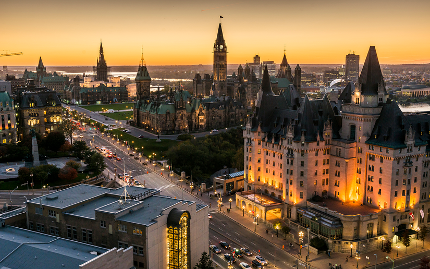
Ottawa is the Canadian capital and the seat of the federal government.
Canada is located in North America. The indigenous population consists of a range of Amerindian peoples[1]Commonly called the ‘First Nations’ in Canada. and Inuit peoples. A third group, that is commonly qualified as indigenous, are the Métis – people of mixed Amerindian or Inuit and European descent that emerged in the 17th century. The Norsemen were the first Europeans to temporarily settle in modern day Newfoundland around 1 000 AD. The first step towards colonization was taken when the Italian explorer Giovanni Caboto – also referred to by his English name of John Cabot – explored the Canadian Atlantic coast and claimed it for England in 1497. A further step was taken when the French explorer Jacques Cartier explored the Saint Lawrence River and claimed it for France in 1534. The first permanent settlements were established by the British, in 1610, in St. John’s on Newfoundland and by the French, in 1605, in Port Royal – the current Annapolis Royal – in current Nova Scotia and, in 1608, in Quebec.
Establishing British rule
The French greatly expanded their possession, forming the colonies of Canada in the Saint Lawrence River Valley and Acadia in what are now the Maritime Provinces – both colonies were part of New France. New France was the name for the joint French possessions stretching from Canada to what is now the state Louisiana in the United States. The British presence was, in the 17th century, limited to their colonies in Nova Scotia and Newfoundland. The tables turned in the 18th century, when, after a series of wars, the French were forced to cede almost all their possessions in Canada to the British. By 1763, the French presence was limited to the small islands of Saint Pierre & Miquelon off the coast of Newfoundland – a French possession until today. The last war fought over the sovereignty over Canada was the War of 1812 with the United States. The war ended in the status quo ante bellum.
From individual colonies to federal dominion
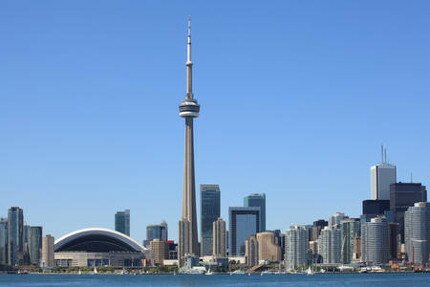
Toronto is Canada’s largest city and the commercial capital.
The British organized their possessions on the Canadian east coast so that, by 1840, five colonies were formed: Canada, New Brunswick, Newfoundland, Nova Scotia and Prince Edward Island. On the Canadian west coast the British had, by 1858, formed the colonies of Vancouver Island and British Columbia. The vast expanse of land in between was claimed by the British but at the time not actively colonized. The exclusive rights to trade in these parts was granted to the Hudson’s Bay Company for Rupert’s Land and to the North West Company for the North-Western Territory. The North West Company was absorbed by the Hudson’s Bay Company in 1821.
In 1867, the federal dominion of Canada was formed which joined three of the British colonies on the east coast: Canada, New Brunswick and Nova Scotia. Four provinces formed the constituent parts of the federation – the colony of Canada being divided into the provinces of Ontario and Quebec. British Columbia – to which Vancouver Island had been attached in 1866 – joined in 1871 and Prince Edward Island in 1873. In 1870, Rupert’s Land and the North-Western Territory were ceded to Canada by Britain and joined to form the North West Territories. In 1880, Britain ceded the Arctic Lands that were attached to the North West Territories. In subsequent years, three new provinces and two new territories were formed from the North West Territories. Newfoundland declined to join the federation until 1949. Thus, modern day Canada consists of ten provinces and three territories. In the nineteenth century the border with the United States was defined in a number of treaties – the last treaty being the Alaska Boundary Settlement signed in 1903. For a summary of the political developments of Canada in a diagram, please refer to the country diagram of Canada.
From dominion to independent monarchy
When the federal dominion of Canada was formed in 1867, it enjoyed self government as a British dominion. The British dominions gained full sovereignty in 1931 through the Act of Westminster. In the case of Canada, sovereignty was limited as certain amendments to the constitution required approval of the British parliament. These last ties to Great Britain – including the status of a dominion – were severed in 1982 through the Canada Act. Canada, thus, gained full sovereignty as a federal constitutional monarchy with the British monarch as head of state. Please note, since 1949 the British monarch is head of state of the – former – dominions in personal union, not as head of state of Great Britain. Canada is a member of the British Commonwealth until today.
The division of powers between the federal government and the provinces are defined in the Canadian constitution. The rights of the territories are defined by the federal government. In Quebec – with its large French speaking population – separatist sentiments have always been strong. In a referendum organized in 1995, 49.4% of the population voted for separation while 50.6% voted to stay in the federation of Canada.
Economy
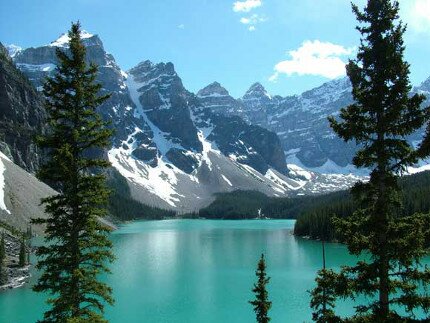
Canadian Rocky Mountains
Economic activities in colonial times included fur trade, logging, fishing and small scale farming. Economic development surged in the 20th century. Large scale farming was introduced in the prairie provinces of Alberta, Manitoba and Saskatchewan – wheat being the cash crop. Manufacturing and mining were developed. Canada, today, holds the third largest proven oil reserves in the world. Finally, services would become the most important sector in the economy. Modern day Canada ranks 17th in the world in terms of GDP and ninth on the Human Development Index of the United Nations.
Demographics
The indigenous peoples account for just over 4% of the population of today’s Canada. Although conflicts, on the scale of the Indian Wars in the United States, are not part of Canadian history, the policy of forced assimilation – long upheld by the Canadian government – met with much opposition. France and Great Britain were the main sources of immigration to Canada. This is reflected by how the population views it’s ethnic identity until today: 32% views itself as Canadian, 20% as English, 15% as French, 14% as Scottish and 14% as Irish. Most of the population is concentrated in the south, close to the United States border – the vast northern expanse is sparsely populated.
Postal history Canada
The first stamps issued in Canada were issued by the individual British colonies as they existed before the establishment of the federation of Canada. Thus, stamps were issued as follows:
- Canada 1851-1868
- New Brunswick 1851-1868
- Nova Scotia 1851-1868
- Newfoundland 1857-1949
- British Columbia & Vancouver Island 1860-1865
- Prince Edward Island 1861-1873
- British Columbia 1864-1868
- Vancouver Island 1865-1868
- British Columbia & Vancouver Island 1868-1871
With the exception of the later issues from Newfoundland, the issues from the British colonies in Canada have catalog values, predominantly, in the mid to very high ranges.
The dominion of Canada issued its first stamps in 1868. The stamps feature the portrait of Queen Victoria in a design that is reminiscent of the 1860-1863 issues of Nova Scotia. The same portrait of the Queen is used, only now facing right instead of left, and the frame is different. One of the great rarities of Canadian philately is the 2 cent denomination printed on laid paper. The first copy was not discovered until 1925 and to date only three copies are known. The design is more akin to United States issues than British issues – which may as less of a surprise when one knows the stamps were printed by the British American Bank Note Company in Montreal and Ottawa, founded in 1866 by former employees of the American Bank Note Company in New York. The American Bank Note Company had printed the 1860-1863 Nova Scotia issues with the same portrait. The design was used in 1870 for a second set of a smaller size – hence these sets are known as the Large Queens and the Small Queens. The portrait of the British monarch, head of state of Canada, features on Canadian stamps until today. Throughout the classic and modern periods Canada has issued stamps with themes of national interest.
A provisional local issue was prepared and used in Port Hood, Nova Scotia in 1899 without authorization. Stamps from the 1898 issues were overprinted with one cent and two cent denominations – one cent on 1/3 of the 1898 issue and 2 cent om 2/3 of the 1898 issue. A further local issue appeared in 1967 in Montreal. Stamps issued by the United Nations in New York in the Canadian currency for use at the Montreal Expo ’67.
Album pages
← Previous page: British HondurasNext page: Canadian Provinces - British Columbia & Vancouver Island →

